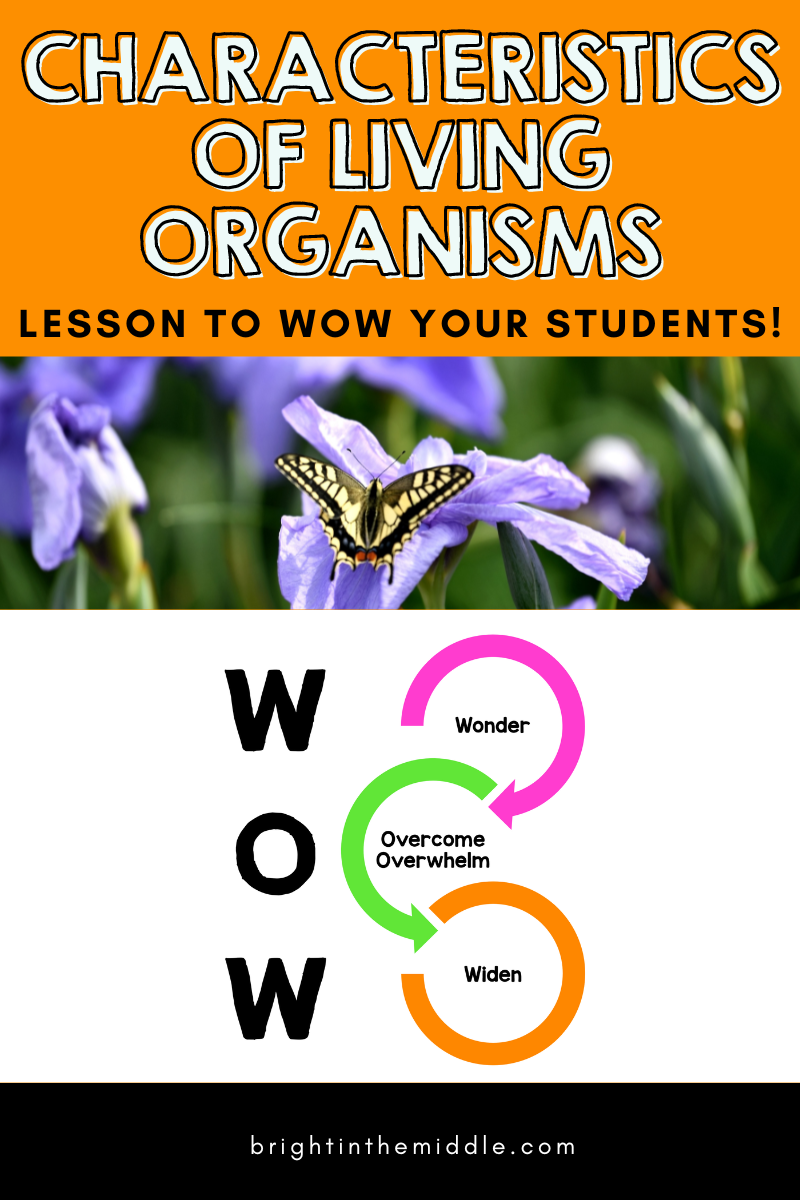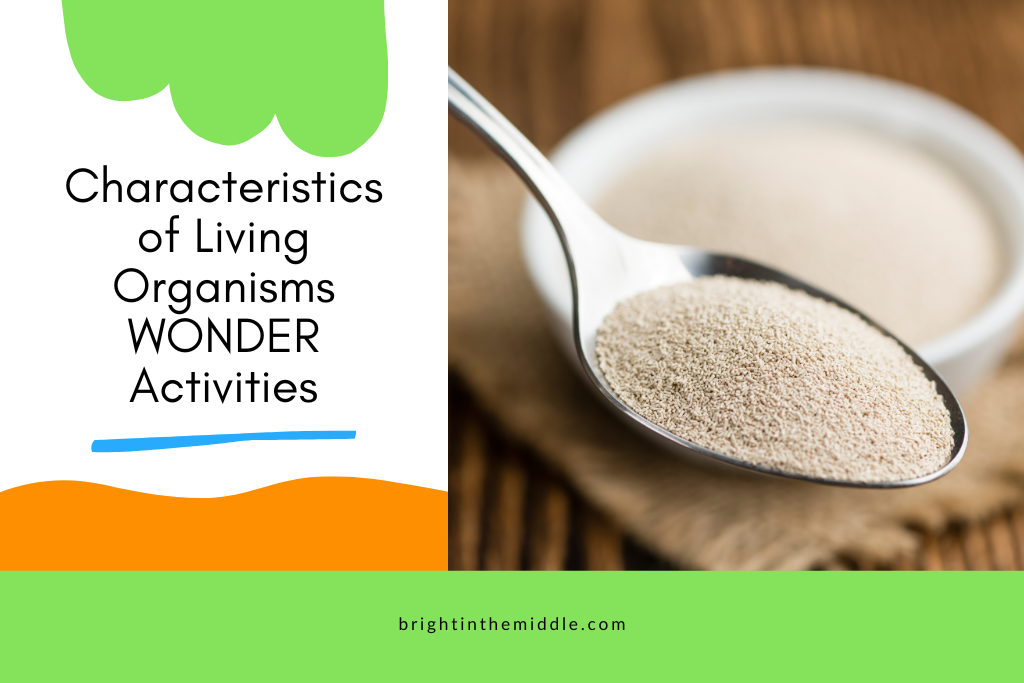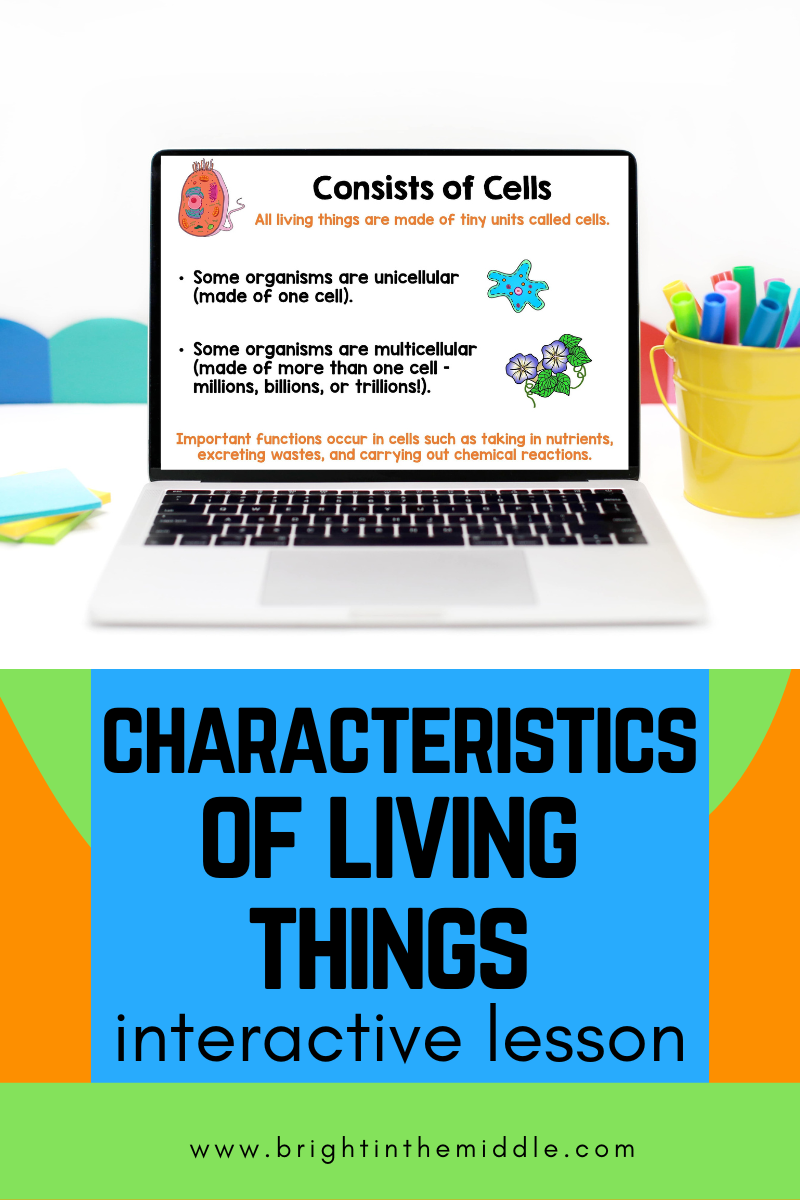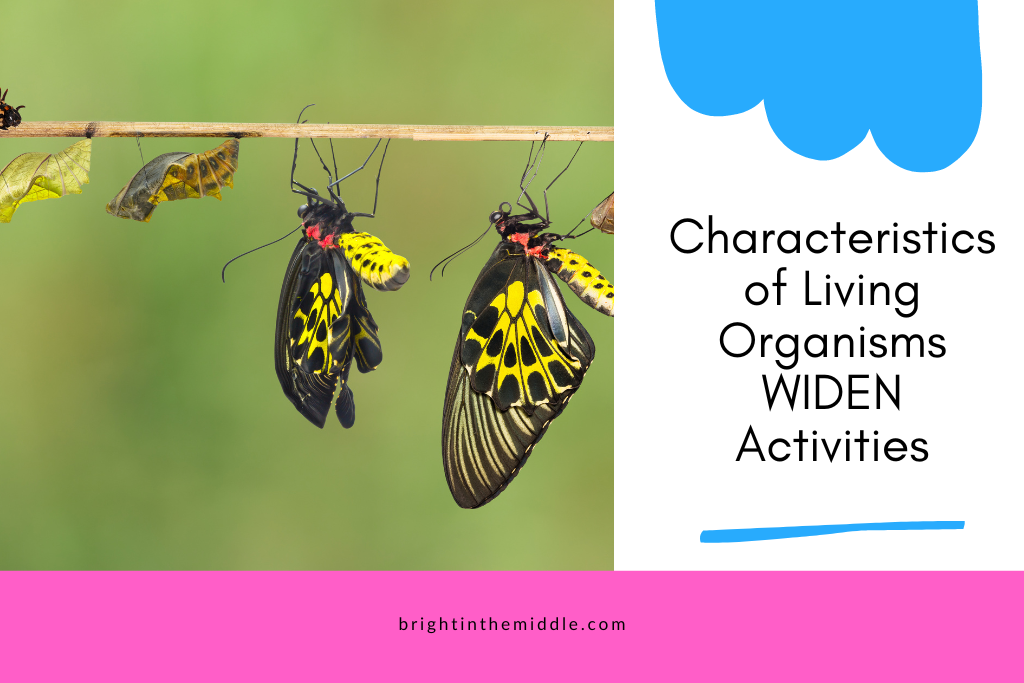Are you about to teach the characteristics of living organisms and are looking for ideas? Well, I have some for you!
Living things are amazing, and I’m not just saying that because I am one myself. It’s truly amazing how living things were created, how they function, and how they live.
Different sources may explain characteristics of living things in different ways; however, overall, scientists agree on what makes something living.
In this post, I share how you can introduce this topic to your students, get them hooked in and internally motivated to learn. Second, I share an interactive lesson to help students learn more about the characteristics of living things. Finally, I share some WIDEN activities to help students learn so much more about the topic!
Time to bring the WOW Factor!

WONDER Activities for the Characteristics of Living Organisms
So, you’re about to teach about the characteristics of living things? Before diving in, try to hook your students in with a WONDER strategy. WONDER strategies will help your students become internally motivated to learn more about a topic. Here are three you can check out!
Living and Nonliving Sort
Here is an easy way to get your students engaged in learning more about the characteristics of living things.
Either print out terms or pictures of living and nonliving things and let students sort them!
Some examples of living things include: a human, rose bush, fungus, grasshopper, pine tree, elephant, mold, ant, sunflower, etc.
Some examples of nonliving things include: a pillow, rock, book, water bottle, brick, clock, basketball, airplane, TV, etc.
After students sort them into categories of living and nonliving, then discuss why they chose to sort them that way. Why is a sunflower considered a living thing? A clock moves. Why wouldn’t it be considered living? …and so on!
Yeast Alive!
This is a really cool demo or lab that shows a living thing doing all the things a living thing does! That was a mouthful. It’s from Scientific American.
But really, this lab gets students excited about learning more about the characteristics of living things because they may not realize that some things, like yeast (something we put in our bread), are living things!
In this lab, students will inflate a balloon using yeast! You will need a packet of baker’s yeast, sugar, a clear plastic bottle, a funnel, and a small balloon in warm water.
You can find all of the instructions here!

Group Venn
Another fun way to introduce this topic is to create a collaborative group Venn. You can do this one of two ways.
- Pull up a huge Venn diagram template on your projector board or draw one on your white board.
- Give each student a few post-it notes.
- Ask them to write down characteristics of living things, nonliving things, and some characteristics they may have in common.
- Have students bring their filled-out post-it notes to the board and place them where they belong.
- Discuss the results. Is there anything missing? Is there anything out of place?
The next way is very similar, but there isn’t as much student movement.
- Draw a huge Venn diagram on the board.
- Ask students to raise their hands and give you characteristics of living things, nonliving things, and some characteristics they may share.
- Write their answers on the board.
- Discuss the results. Is there anything missing? Is there anything out of place?
Characteristics of Living Things Interactive Lesson
Interactive lessons are great for so many things! Of course they are great as a lesson, but they also make great reviews, homework, test prep, etc.!
Interactive lessons work to reduce student overwhelm when learning a topic by using the 7 steps to help students retain information. This helps students ultimately remember the material better. These strategies include things such as segmenting information, keeping related texts and pictures together, and starting simple. Interactive lessons incorporate these strategies.

In this characteristics of living things interactive lesson, students look at the traits that make something “alive”. They learn about how living things consists of cells, grow, change, develop, obtain and process energy, and more! This is not your average “characteristics of living organisms PowerPoint”.
You can skip the characteristics of living things worksheet! The best thing about interactive lessons is that there are embedded activities to help students process information as they learn the material. In this lesson, there are drag-and-drop activities, exploring outside resources, four corners vocabulary, and more!
This lesson can be found in the Bright in the Middle Shop.
It can also be found on TPT.
Characteristics of Living Things Activities to WIDEN Knowledge
Are you looking for a characteristics of living things activity to expand your students’ knowledge on the topic? Here are three ideas you can implement in your classroom!
Life Cycle Project
There are characteristics that define all living things. What are some characteristics of living organisms? They consist of cells, grow, change, and develop, obtain and process energy, respond to the environment, maintain homeostasis, and reproduce.
They share all of these things, but life looks different for each organism.
In this project, students can explore a specific life cycle to learn about the characteristics of life at a deeper level.
They can look at different mammals (including humans), insects, birds, plants, frogs, butterflies, etc. They can choose their favorite organism, or you can assign it!
When students research their assigned or chosen life cycle, they can research each stage (looking at physical changes, behavioral adaptations, environmental factors, etc.). They can also include information about the diet and ecological role of the organism.
You can have students create a poster, presentation, brochure, or whatever presentation tool you choose, and they can then share it with the class!

Create an Organism
Another fun activity would be to have students create their own organism!
This organism should have ALL The characteristics of living organisms.
They should consider where this organism will live, what adaptations it might need, and of course, any unique characteristics!
Students can create a poster of this organism with a description or any other method you choose for students to deliver information about their organism!
Create a Quiz
Don’t have time for a project, but are looking for a quick way for students to expand and apply their knowledge? Your students can create a quiz!
Tell students to create their own quiz based on the characteristics of living organisms. They can have multiple choice questions, true/false questions, and short answer questions! They must have an answer key!
Once students finish, they can trade with a partner! How will they do on someone else’s quiz?!
Help your students master science content!



[…] Characteristics of Living Organisms […]